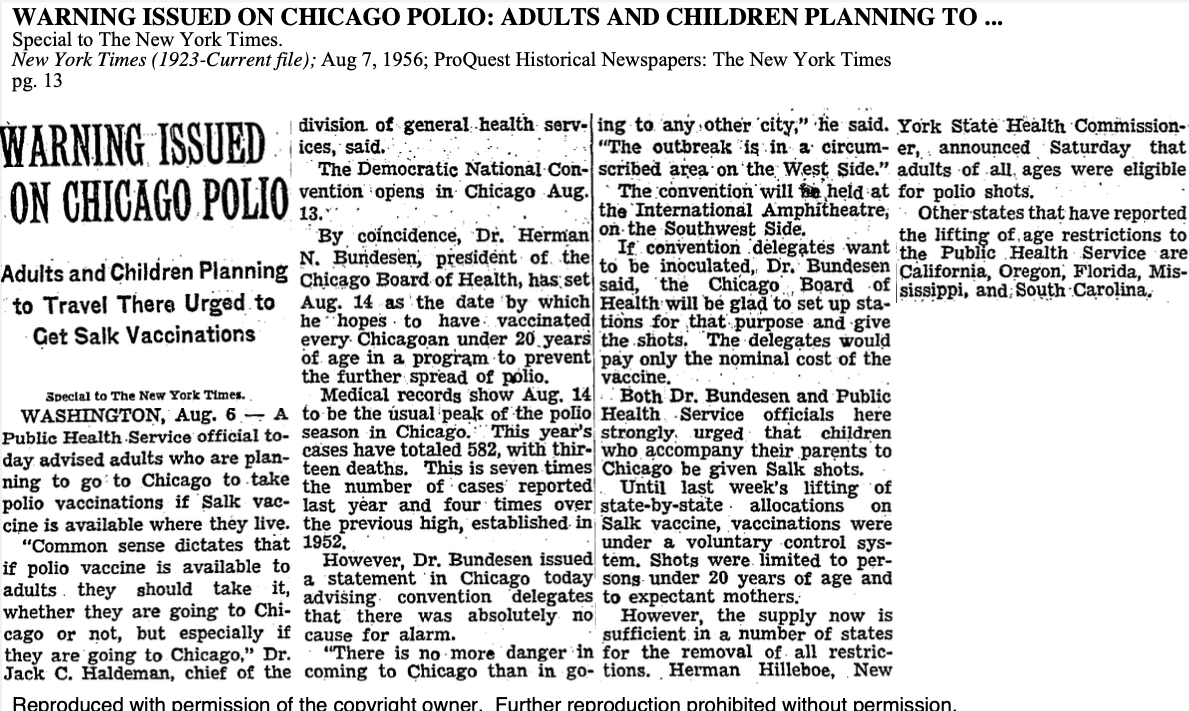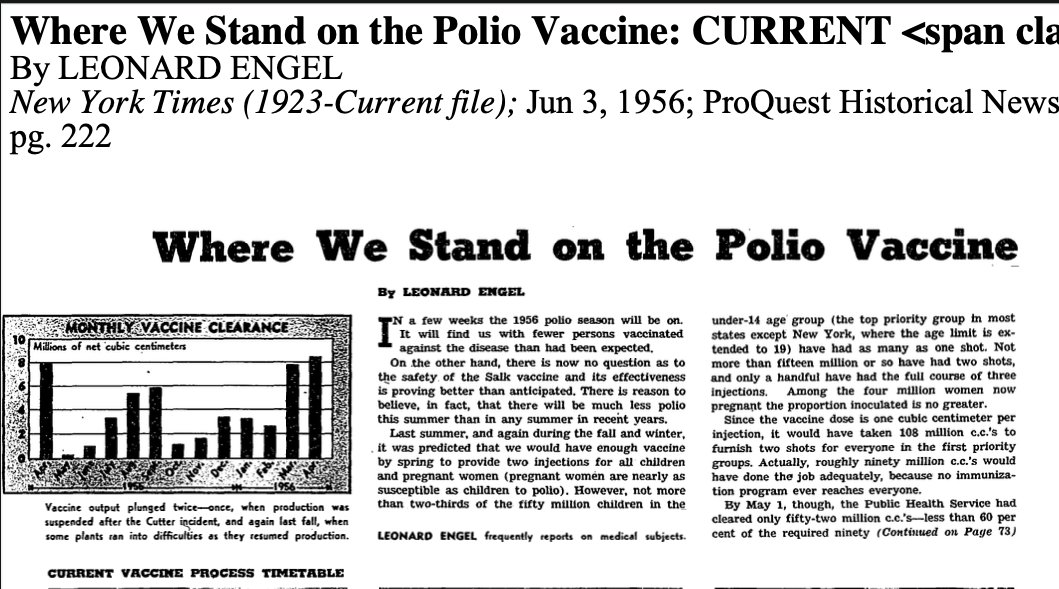
With the polio vaccine, the high-priority group was children. It began with 7 and 8 year olds in late spring 1955.
Polio was seasonal, peaking in summer, and when vaccination began in spring 1955 there was uncertainty about whether it would be safe to keep putting it in kids' arms during the peak summer months. By June, the expert consensus was that the benefits outweighed the risks. 

Less than two weeks into the effort, with demand far exceeding supply, NYC's health commissioner asked for the federal government to take over distribution and complained of "continuously confusing" messages about how it was to be delivered 

In October 1955, a goal was set to vaccinate all American children ages 1 to 9 in 1956. It was thought that there would be enough supply by then. 

But by April 1956, with summer looming and demand surging, there were again shortages. The New York Times asked, "Why, after a year of commercial production, is the vaccine still in short supply?" 

Chicago had a severe outbreak in July 1956, reported here on the front page of the Black-owned Defender: "All victims of the city's current polio outbreak are in the low income group and 55 percent of them are Negroes." 

In early August, a week before the Democratic National Convention was to meet in Chicago, the federal government "advised adults who are planning to go to Chicago to take polio vaccinations if Salk vaccine is available where they live" 

The city reported in late August that polio cases were focused in 4 areas on the city's West Side that were home to "Negro and white migrants" from the South 

By 1960, polio very disproportionately sickened low-income Black children. The CDC reported that spring that "Negroes living in slums" were now 6 times likelier than the national average to contract polio. 

The reason was structural racism, poverty, and no national health-care system. But the CDC spokesman said too many people in such neighborhoods were "apathetic toward the vaccination program." Which of course he did, it's a racist country, but kinda takes my breath away 

@threadreaderapp unroll
• • •
Missing some Tweet in this thread? You can try to
force a refresh






